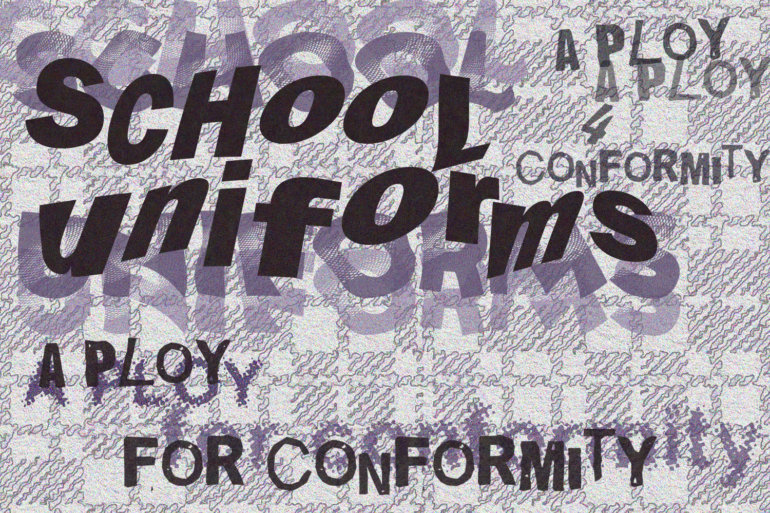I grew up in a K-12 private school for girls. Unlike most schools of that sort, it didn’t really promote religious or political extremities. They generally succeeded in creating an open environment in which we could form our own personalities and beliefs. While I appreciate the institution in that aspect, I have to offer some criticism for one policy that contradicted the individuality they promoted so heavily.
We didn’t always have uniforms. One day at the end of my sophomore year, the headmaster informed us that mandatory uniforms would be implemented as of the upcoming year. The news was soul-crushing. For the next few weeks, I had to listen to adults try to convince me that a uniform would be beneficial for my education. The truth is there is no substantial evidence that uniforms positively affect students’ learning.
The main argument that I heard from the people defending this decision was that uniforms increase attendance and academic performance. In 2021, Arya Ansari, an assistant professor in the department of human sciences at The Ohio State University College of Education and Human Ecology, conducted an academic research study about the effect of uniforms on grade-school students. The sample concluded that uniforms have little to no effect on attendance and academic performance. The study found that students lack a “sense of belonging” at school because of their uniforms.
Uniforms deny students personal autonomy, which often causes feelings of discomfort. Clothing can be a sensitive choice for many people, especially teenagers. Many people choose specific clothing to help deflate their self-doubt, and being forced to wear a uniform may make suppressing these doubts difficult, leading to body image complications.
It is often said that the eye is the window to the soul, but I would argue that fashion is the true window to the soul. An individual’s stylistic choices are reflective of their personal lives, circumstances, and aspirations. This form of personal expression is especially essential during developmental years as kids navigate their way into discovering themselves. Fashion is a form of communication that gives people power over how they are perceived. Learning how to harness this skill is essential for navigating social and professional settings. One would think a school that charges extra for ensuring kids’ successful futures would take that into account.
We were told that we would look more professional and appealing to parent visitors who were considering enrolling their children. Upon hearing this comment and with the hefty priced, cheaply made garments in mind, I couldn’t help but feel like the uniforms were a tool for the school’s financial gain as opposed to the success of their current students.
On top of all these uniform-induced problems, conformity is just plain boring and bleak. I wish private schools like this realized that it’s really not that deep. It doesn’t matter if a child looks unprofessional. Kids don’t need to look professional. Grade school years are precious, so children and teenagers should use them to have fun and develop good memories, not worry if their uniform skirt is one centimeter away from landing them in detention. They tried to tell me the uniform was for my success. To that, I say it’s nothing more than a product of capitalism and a ploy for conformity.
Words by Mishi Ali.
Graphic by Eve Friday.

